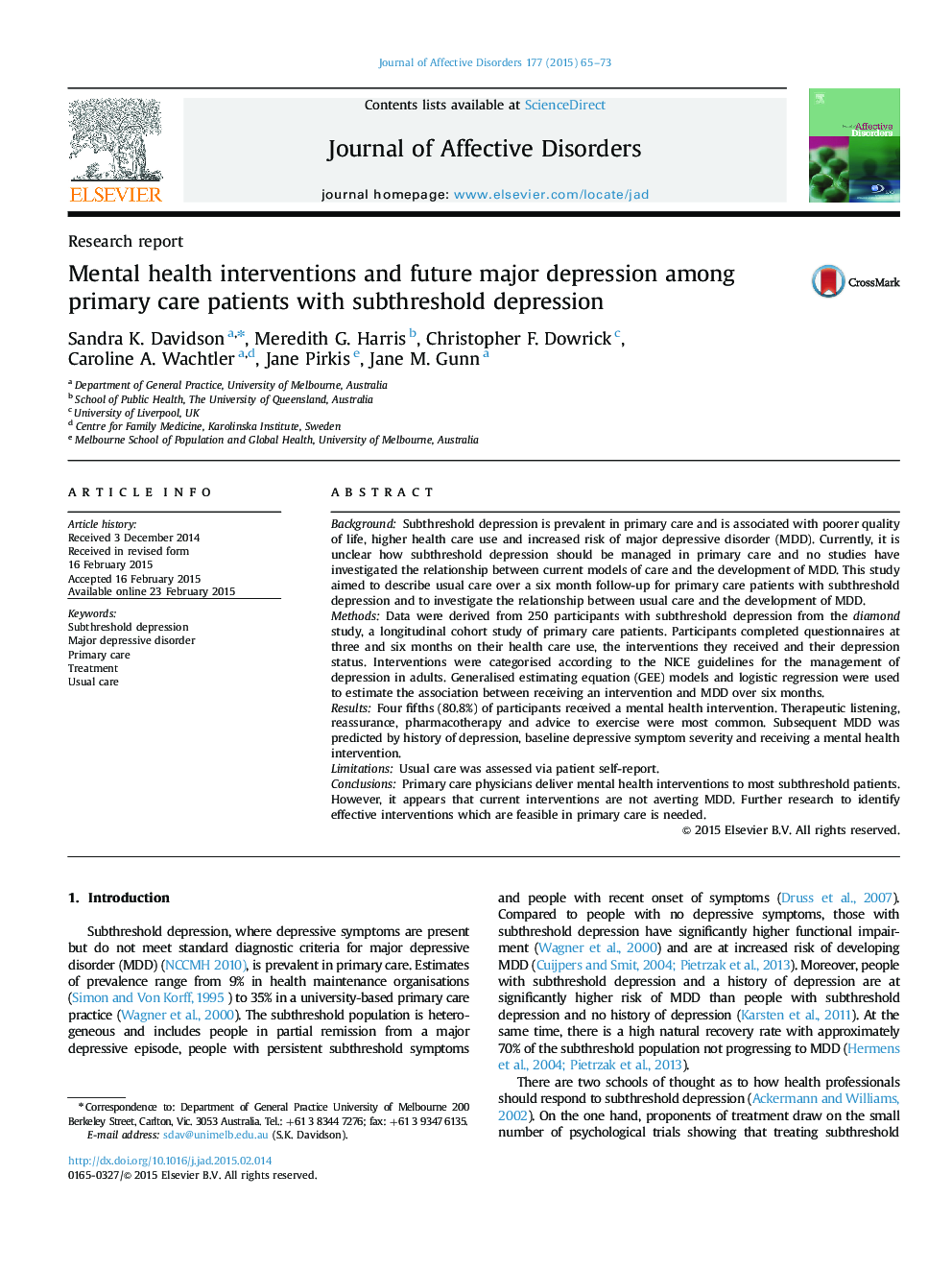| Article ID | Journal | Published Year | Pages | File Type |
|---|---|---|---|---|
| 4185907 | Journal of Affective Disorders | 2015 | 9 Pages |
BackgroundSubthreshold depression is prevalent in primary care and is associated with poorer quality of life, higher health care use and increased risk of major depressive disorder (MDD). Currently, it is unclear how subthreshold depression should be managed in primary care and no studies have investigated the relationship between current models of care and the development of MDD. This study aimed to describe usual care over a six month follow-up for primary care patients with subthreshold depression and to investigate the relationship between usual care and the development of MDD.MethodsData were derived from 250 participants with subthreshold depression from the diamond study, a longitudinal cohort study of primary care patients. Participants completed questionnaires at three and six months on their health care use, the interventions they received and their depression status. Interventions were categorised according to the NICE guidelines for the management of depression in adults. Generalised estimating equation (GEE) models and logistic regression were used to estimate the association between receiving an intervention and MDD over six months.ResultsFour fifths (80.8%) of participants received a mental health intervention. Therapeutic listening, reassurance, pharmacotherapy and advice to exercise were most common. Subsequent MDD was predicted by history of depression, baseline depressive symptom severity and receiving a mental health intervention.LimitationsUsual care was assessed via patient self-report.ConclusionsPrimary care physicians deliver mental health interventions to most subthreshold patients. However, it appears that current interventions are not averting MDD. Further research to identify effective interventions which are feasible in primary care is needed.
